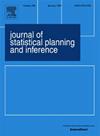太多,太不可能:测试联合假设和封闭测试捷径
IF 0.8
4区 数学
Q3 STATISTICS & PROBABILITY
引用次数: 0
摘要
假设检验是实证科学的一个重要组成部分,多重检验以及多个检验证据的结合是实证科学的持续研究领域。在本文中,我们考虑将多个假设检验的结果组合到(i)检验全局假设和(ii)在控制k-FWER的情况下进行边际推理的问题。我们提出了一种新的联合假设组合检验系列,称为“太多,太不可能”(TMTI)统计,我们通过模拟表明,它比针对许多替代方案的其他组合检验具有更高的功率。此外,我们证明了在封闭测试程序中使用二次型捷径时,包括我们提出的组合测试和其他组合测试在内的一大族的组合测试都承认一个二次型捷径,该方法对FWER有很强的控制。我们开发了一种算法,该算法在假设数量上是线性的,用于在假设集合中获得假假设数量的置信集,并且在控制k- fwer的任何k大于1的假设数量上是三次的。本文章由计算机程序翻译,如有差异,请以英文原文为准。
Too Many, Too Improbable: Testing joint hypotheses and closed testing shortcuts
Hypothesis testing is a key part of empirical science and multiple testing as well as the combination of evidence from several tests are continued areas of research. In this article we consider the problem of combining the results of multiple hypothesis tests to (i) test global hypotheses and (ii) make marginal inference while controlling the -FWER. We propose a new family of combination tests for joint hypotheses, called the ‘Too Many, Too Improbable’ (TMTI) statistics, which we show through simulation to have higher power than other combination tests against many alternatives. Furthermore, we prove that a large family of combination tests – which includes the one we propose but also other combination tests – admits a quadratic shortcut when used in a Closed Testing Procedure, which controls the FWER strongly. We develop an algorithm that is linear in the number of hypotheses for obtaining confidence sets for the number of false hypotheses among a collection of hypotheses and an algorithm that is cubic in the number of hypotheses for controlling the -FWER for any greater than one.
求助全文
通过发布文献求助,成功后即可免费获取论文全文。
去求助
来源期刊
CiteScore
2.10
自引率
11.10%
发文量
78
审稿时长
3-6 weeks
期刊介绍:
The Journal of Statistical Planning and Inference offers itself as a multifaceted and all-inclusive bridge between classical aspects of statistics and probability, and the emerging interdisciplinary aspects that have a potential of revolutionizing the subject. While we maintain our traditional strength in statistical inference, design, classical probability, and large sample methods, we also have a far more inclusive and broadened scope to keep up with the new problems that confront us as statisticians, mathematicians, and scientists.
We publish high quality articles in all branches of statistics, probability, discrete mathematics, machine learning, and bioinformatics. We also especially welcome well written and up to date review articles on fundamental themes of statistics, probability, machine learning, and general biostatistics. Thoughtful letters to the editors, interesting problems in need of a solution, and short notes carrying an element of elegance or beauty are equally welcome.

 求助内容:
求助内容: 应助结果提醒方式:
应助结果提醒方式:


